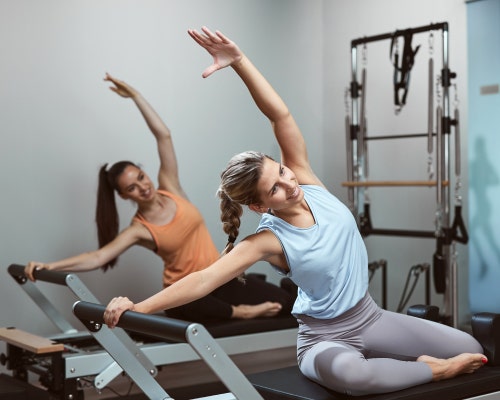What is a Ruck Workout?
- 10/12/23


What do you get when you combine heart-pumping cardio exercise with muscle-building strength training? A ruck workout, which is a growing fitness trend. The term “ruck” is short for “rucksack,” a military backpack.
Ruck marching is deeply rooted in military history. Today, military branches use ruck marching as a part of physical training and ruck workouts have made their way into the mainstream.
A ruck workout can be an enjoyable way to combine both cardio and strength training. Let’s explore how to make a rucking part of your weekly routine.
What is a Ruck Workout?
A ruck workout is a form of exercise that involves carrying a weighted backpack while walking or hiking.
Despite carrying a weighted backpack, rucking is considered a low-impact exercise. When rucking, you are doing weighted walking, which combines the cardio benefit of walking with the strength benefit of resistance training.
Benefits of a Ruck Workout
Ruck workouts offer similar cardiovascular benefits as walking. Moderate-intensity walking helps improve the health of the heart and lungs as well as lower the risk for certain chronic diseases.
You strengthen muscles while weight training by increasing the amount of weight (aka load) that your muscles move. By carrying a weighted backpack, you increase the load on your joints, particularly in your legs, which helps strengthen your muscles.
Drawbacks of a Ruck Workout
There are drawbacks to doing a ruck workout. The first of which is that you will need equipment, including a backpack and weight.
Beyond needing equipment, another drawback is that the act of carrying a weighted backpack can increase the amount of strain on your tibia, which is the primary bone that connects your knee and ankle.
Shin splints are a common injury when individuals try to do “too much” when it comes to a ruck workout. But injury can be prevented with some basic steps for beginning a ruck workout outlined below.
How To Do a Ruck Workout
Here are answers to common questions to help you start rucking today.
What Equipment Do I Need?
All you need to get started with a ruck workout is a backpack and some form of weight.
Weight ideas for rucking:
- Weight plates
- Dumbbells
- Kettlebell
Practice caution if using bricks or rocks as they can tear the fabric of your backpack and be painful to carry. Also, ensure that you have comfortable and supportive shoes since you are increasing the amount of load on your feet.
If you are new to rucking, you can begin with any available backpack. Over time, you may want to invest in a hiking backpack that is adjustable and fitted to your torso. There are also rucking packs available with custom weighted plates, but they can be more costly.
Can I Do a Ruck Workout with a Weighted Vest?
Yes, using a weighted vest can be a substitute for a ruck backpack. One key distinction between a weighted vest and a rucking pack is where and how weight is distributed on your body.
For example, weighted vests put a majority of the load on your shoulders and upper body. A hiking or rucking backpack puts most of the load on your hips, assuming there is a hip belt. Comfort may be a big deciding factor in whether you choose a weighted vest or pack.
How Long Should I Ruck?
As you begin your rucking journey, remember to start slowly and build. If you exercise regularly, try an initial 15 to 20-minute ruck workout at a comfortable pace.
This first ruck workout will give you good feedback on shoe comfort and any adjustments that need to be made to the backpack for optimal comfort and fit. Over time, you can gradually increase the pace and distance that you walk (not run).
How Much Weight Should I Use?
Military ruck marching experts suggest that to prevent injury, before you add a weighted pack to your walk, ensure that you can walk comfortably without weights first.
When you are ready to add weights to your walking, begin with a weight that is 10% of your body weight. Then, slowly add weight as you build strength and endurance.
Happy rucking!
References:
-
Williams and Thompson. Walking Versus Running for Hypertension, Cholesterol and Diabetes Mellitus Risk Reduction Arteriosclerosis, Thrombosis, and Vascular Biology. 2013;33:1085-1091. doi:10.1161/ATVBAHA.112.300878.
-
Wang H, Kia M, Dickin DC. Influences of load carriage and physical activity history on tibia bone strain. J Sport Health Sci. 2019;8(5):478-485. doi:10.1016/j.jshs.2016.08.012.
-
Hauschild, V, Roy, T, Grier, T, Schuh, A, Jones, B. Army Public Health Center Aberdeen Proving Ground - Edgewood Area United States. Foot Marching, Load Carriage, and Injury Risk. Technical Report,16 Jun 2016.





